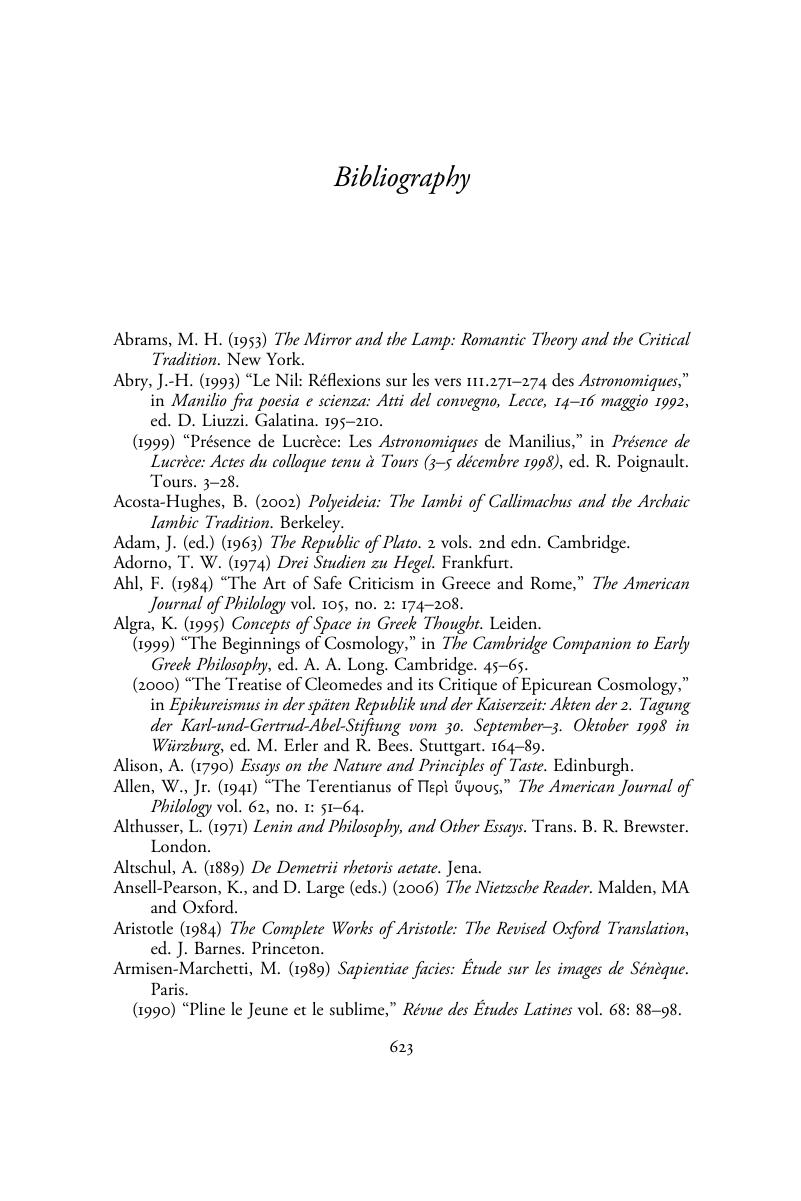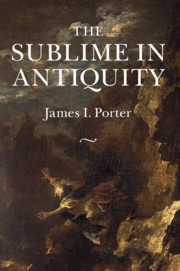Book contents
- The Sublime in Antiquity
- The Sublime in Antiquity
- Copyright page
- Dedication
- Dedication
- Contents
- Illustrations
- Book part
- Glossary
- Note on translations
- Preface
- Chapter 1 Introduction: the sublime before and after Longinus
- Chapter 2 The art and rhetoric of the Longinian sublime
- Chapter 3 The sublime before Longinus in rhetoric and criticism: Caecilius to Demetrius
- Chapter 4 The sublime before Longinus in rhetoric and literature: Theophrastus to Homer
- Chapter 5 The material sublime
- Chapter 6 The immaterial sublime
- Conclusion
- Bibliography
- Index locorum
- General index
- References
Bibliography
Published online by Cambridge University Press: 05 February 2016
- The Sublime in Antiquity
- The Sublime in Antiquity
- Copyright page
- Dedication
- Dedication
- Contents
- Illustrations
- Book part
- Glossary
- Note on translations
- Preface
- Chapter 1 Introduction: the sublime before and after Longinus
- Chapter 2 The art and rhetoric of the Longinian sublime
- Chapter 3 The sublime before Longinus in rhetoric and criticism: Caecilius to Demetrius
- Chapter 4 The sublime before Longinus in rhetoric and literature: Theophrastus to Homer
- Chapter 5 The material sublime
- Chapter 6 The immaterial sublime
- Conclusion
- Bibliography
- Index locorum
- General index
- References
Summary

- Type
- Chapter
- Information
- The Sublime in Antiquity , pp. 623 - 657Publisher: Cambridge University PressPrint publication year: 2016

